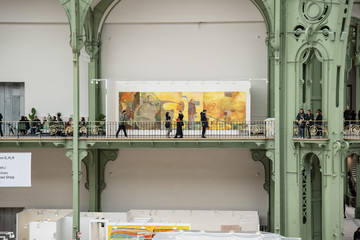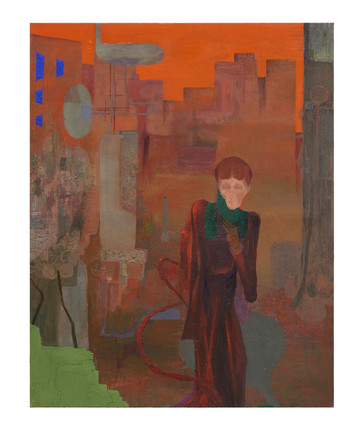Piktogram presents works by Iwo Panasiewicz (b. 1997) and Jan Eustachy Wolski (b. 1997), created especially for Paris Internationale 2025
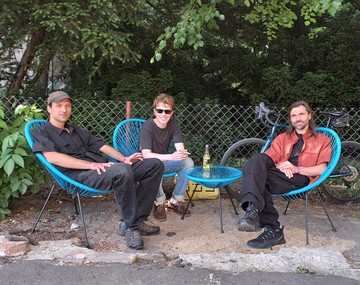
Artists are working in different media – Panasiewicz deals mainly with drawing, and Wolski with painting. Both artists live and work in Kraków, Poland. They have been best friends since they were kids.
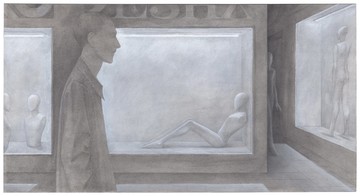
Iwo Panasiewicz, Passage II, 2025
Gouache, pencil and coloured pencil on paper, 29 × 54.3 cm
Framed: painted ash wood, passe-partout, museum glass (anti-reflex, UV filter), 40.3 × 65.2 cm
The characters, place, time and narrative are undefined in Panasiewicz’s drawings. The figures sit, lie, stand and walk, carefully posed. The author does not hint at explaining the meaning of the works. After closer examination one could notice motifs and details which emphasise the artificiality of the world depicted. In his work, he refers to art from the Medieval and Renaissance periods as well as his previous experience with game design.
As a teenager, he taught himself 3D programmes and designed computer games and virtual spaces. He spent a lot of time in abandoned hovels, scribbling on the walls. At university, he studied computer graphics, animation and interactive design. He was also involved in film post-production. In addition to experience with new technologies, he has worked on construction sites.
At some point he decided to abandon new technologies and radically move into the analogue realm – he reduced his tools to pencil and paper, building crude and ascetic sceneries. He realised that the greater his limitations, the closer he came to the point.
In his work, he refers to art from the Medieval and Renaissance periods as well as his previous experience with game design. In his most recent works, he reaches for more colours that are on the verge of visibility – emerging from the grey. The restraint of form and precision of perspective are in tandem with the non-linear narrative running through the drawings.
The artist is a master of precise detail and creates semi-artificial reality immersed in a dreamlike atmosphere.



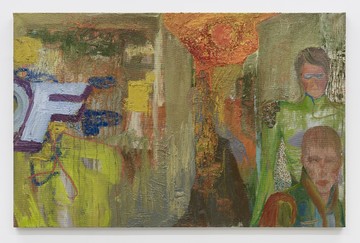
Jan Eustachy Wolski, Untitled, 2025
Oil on jute canvas, 100 x 155 cm
His works often depict retro-futuristic dystopias in which conspiracy theories, growing paranoia, and parareligious cults serve the supremacy of some social groups over others and the control of new energy sources.
In his practice, Wolski deals with the phenomenon of a simultaneous coexistence of different temporalities in today’s contradicted, patchwork reality. Wolski works in series that build up a quasi-literary narrative. Each painting in a series does not illustrate anything in particular but rather works as a trope on some more abstract level. The division into chapters of a larger story serves more to frame: ideas, visual associations, and painted matter itself than to tell a tale.
In addition to the complex content of his works, the artist masterfully manipulates paint, using a variety of techniques. His paintings are characterized by rich paint texture, impasto, layering, and a daring yet sophisticated color palette.

